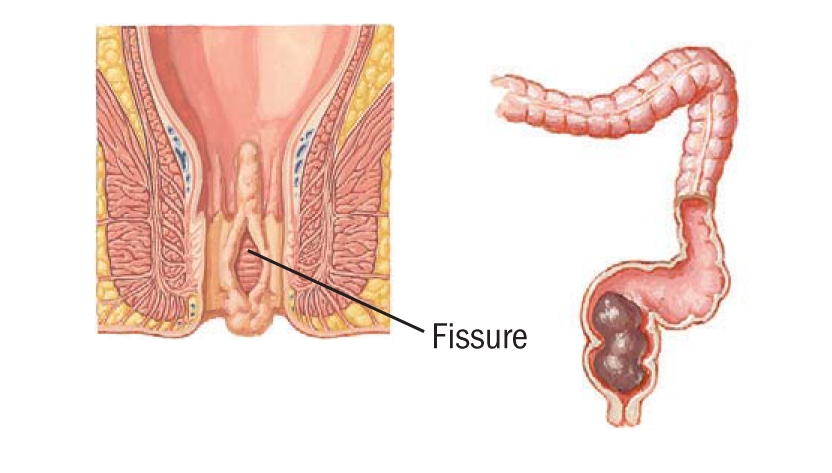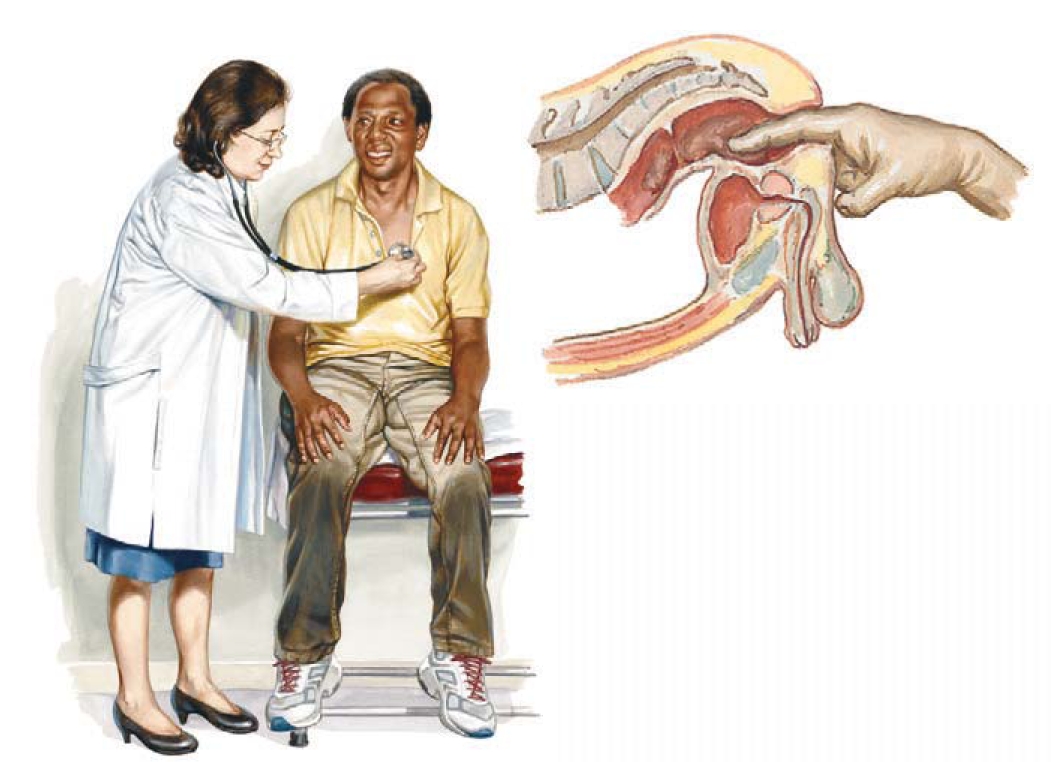Anal Fissure
 What Are Anal Fissures?
What Are Anal Fissures?
An anal fissure is a tear in the lining of the anus or anal canal.
The anal canal is the last part of the large intestine between the
rectum and anus. This common condition affects men and
women equally and both young and old people. Fissures are very
common in babies 6 to 24 months old and during pregnancy.
What Causes Anal Fissures?
The usual cause is passing large, hard stool. Constipation and
straining during bowel movements can also cause it. Another
cause is inflammation of the anus and rectum. Crohn's disease
and inflammatory bowel disease can also cause this inflamma-tion. Risk factors include frequent bowel movements, diarrhea,
infections, cancer, and trauma. Examples of infections causing
anal fissures are tuberculosis, syphilis, and gonorrhea, herpes
simplex virus, cytomegalovirus, and HIV. Trauma may be from
surgery or anal sex. Older people may have anal fissures partly
because of straining when moving bowels due to constipation
and poor blood flow to the area. Anal fissures are also common
in women after childbirth.

What Are the Symptoms of Anal Fissures?
The main symptoms are sharp, burning, or tearing pains that
are made worse by bowel movements. Bright-red blood on toi-let paper and on the stool or in the toilet water is another. Other
problems include itching, discomfort, or cracks in the skin
around the anus.
How Are Anal Fissures Diagnosed?
The health care provider makes a diagnosis from the medical
history and physical examination, including a digital rectal ex-amination. The health care provider may do laboratory tests
and colonoscopy to rule out similar diseases. Colonoscopy in-volves using a flexible tube (colonoscope) with a lighted tip to
look inside the colon. Biopsy and tests for infections may be
done. A specialist (colorectal surgeon) may be seen.

How Are Anal Fissures Treated?
Anal fissures usually heal without treatment or with nonsurgical
treatments. The main forms of treatment are stool softeners
(docusate), sitz baths, and other lifestyle measures. These mea-sures also include eating a high-fiber diet, increased drinking of
fluids, and getting regular exercise. A local anesthetic jelly or
nitroglycerin ointment may be applied to the anus.
A local anesthetic jelly or
nitroglycerin ointment may be applied to the anus. In resistant
cases, botulinum toxin may be injected into each side of the
internal anal sphincter muscle. This method helps heal chronic
anal fissures in more than 90% of people. Most people improve
in a few days with treatment. If conservative therapies don't
work in 4 to 6 weeks, surgery can be done. It's usually done on
an outpatient basis.
Keep the anal area dry. For babies, changing diapers regu-larly and keeping the anal area clean are important
 DOs and DON'Ts in Managing Anal Fissures:
DOs and DON'Ts in Managing Anal Fissures:
DO have a healthy lifestyle.
Get enough exercise.
Eat a well balanced, high-fiber diet rich in fruits and vegetables.
Drink enough liquids.
DO call your health care provider if you have severe or lasting rectal bleeding.
DON’T stop taking your stool softener because you feel better, unless your health care provider tells you to.
DON’T use any medicines (including over-the-counter and herbal products) without first asking your health care provider.
DON’T ignore symptoms. Call your health care provider if your symptoms don’t improve or they worsen during treatment or if you see new symptoms.

